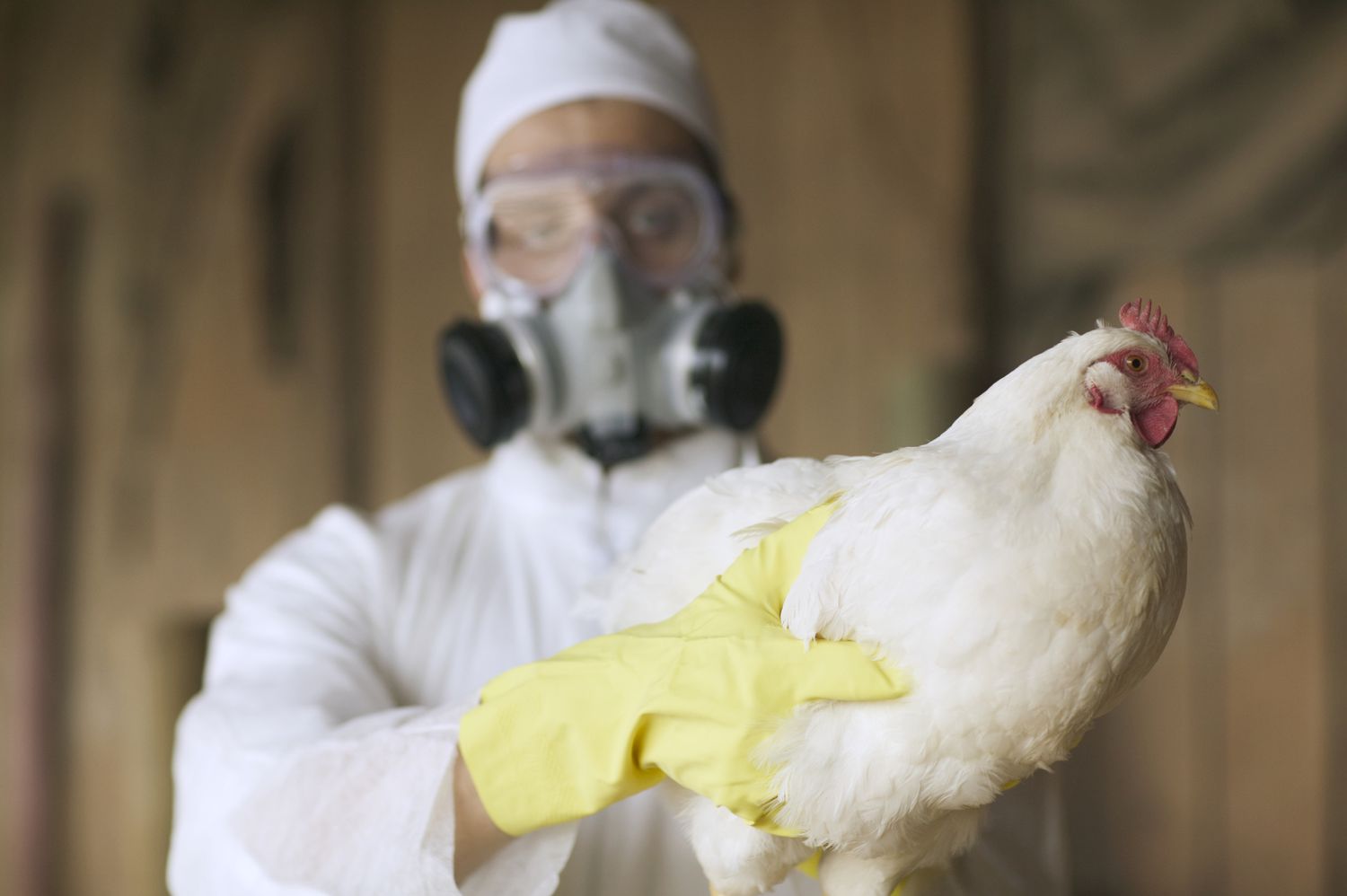It’s the Centers for Disease Control and Prevention (CDC) that has confirmed the first serious bird flu (avian flu) case in the United States. This news has left many asking how it will affect public health, the economy, and international markets. As the H1N1 symptoms remain uncertain and the best influenza drugs are available, experts are comparing previous pandemics to this one. The same news has affected markets too today as industries prepare for disruption.
While health authorities monitor the pathology of this wildly infectious strain, stakeholders from every industry are monitoring the wider picture. To exploring the reasons why stocks are sapping money Fears of economic stability are rising since the CDC’s report. In this post, I explain the case details about bird flu, public health impacts and how the case related to economic unknowns and in particular white organic share price and now stock performance.
Understanding Avian Influenza and Its Risks
Avian influenza or bird flu is a virus that’s typically seen in birds but has the potential to cause human illness under certain circumstances. The CDC’s report of the first serious bird flu case in the US speaks to the indeterminacy of zoonotic infections. The US has only known bird flu as a result of infected birds or contaminated habitats, but there isn’t any humantohuman transmission. The new case resembled H1N1-related symptoms of fever, fatigue and respiratory issues, so early identification is key. Aside from antibiotics, symptomatic control and severe complications are common influenza medicines.
This case only reveals the urgency of surveillance and public education to prevent risks. The avian flu, unlike seasonal flu, is fatal, which places health authorities on edge. And the virus will grow, and then threaten not only human life but also agriculture, commerce and even the stock market. Like welled due to concerns of economic breakdown in the masses, as during previous epidemics.
The threats posed by bird flu aren’t only health related. The virus makes a real mess of poultry farming, resulting in supply chain disruptions and higher prices. That can then impact the markets now, as investors track sectors that depend on poultry. The CDC has also stressed that people need to be educated about how to prevent the virus from spreading, for example, not touching sick birds and keeping their hands clean. Amid the new case, influenza treatments companies like antiviral drugmakers might get a jump on their post-deal stock prices.
The CDC is trying to determine where and how the infection originated, but outbreaks of this kind can still happen. Health is always connected to economy when conversations about white organic share price and market performance rumble on. This shows the bigger effects of health crises on businesses and incomes.
H1N1 Symptoms and Comparisons to Bird Flu
Sicknesses like H1N1 provide a window into how bird flu could act. They are both the same virus: fever, cough, muscle pain, but birds have more severe respiratory problems. People should also be alert, says the CDC, particularly if around high-risk places such as farms or live bird auctions. There is no time to delay recognizing symptoms because early treatment with influenza will save you from complications such as pneumonia or organ failure.
Bird flu is more localised, but more fatal, compared with H1N1, which caused a global pandemic in 2009. This latest case has brought back talk of another pandemic and now we are all wondering why the stock market is falling under the spotlight of worries. In the past, the risk of public health scares often results in market swings in now shares as investors try to offset losses from possible lockdown or lower consumer demand.
The symptom overlap between H1N1 and bird flu can make diagnosis tricky. This will demand more testing and more sophisticated diagnostic equipment — and that could be good news for tech companies working on healthcare technologies. It is important for individuals to know the difference between common flu and the more serious variants if they want to get proper medical care. Vaccination and antiviral therapies are still the backbone of H1N1 management, and may be applied to avian influenza too.
As bird flu news hits the US, Americans are comparing it to earlier epidemics of influenza and their consequences for life and finance. Market observers are watching events, and especially the ones affecting the price of white organic shares today as well as the market sentiment. These comparisons make me think again of how health emergencies spread across every corner of society.
The Function of CDC and Public Health Preparedness.
It is the CDC that coordinates the surveillance and response to outbreaks such as bird flu. The fact that they confirmed the first major US bird flu case so early underscores the importance of surveillance. In its work with state and international health agencies, the CDC works to prevent the virus from spreading and keep the public up-to-date. Education about influenza prevention and medicine is how we empower people to fight back.
Health isn’t the only thing the CDC does, which has a knock-on impact on the economy. The agency’s news can erode public trust and affect everything from where people go to how much they spend. Questions such as “stoxx market open tomorrow?”. tend to come out of this kind of precarious moment, in which health and income are often the interlocking issues. The CDC’s open communication avoids panic, the basis of market balance.
Emergency plans led by the CDC include stockpiling antiviral drugs, orchestrating vaccine design and doing real-time analysis of the virus’s behaviour. These are preventative steps against outbreaks and high-risk groups. But public health is not a venture that could succeed without the participation of industries and communities. As in the case of bird flu in the US, there is a quick-hit cooperation between government and private.
The financial cost of outbreaks like this can’t be admonished. Health reports are what the market hears about today, as investors rebalance portfolios according to changes in risk. Stock prices in now companies might go up in companies that are focused on flu treatments or pandemics, but other industries are unsure. This dynamic makes it crucial that public health programmes be in sync with economic imperatives.
Economic Impact and Market Sentiment
Bird flu confirmed in the US sent shockwaves through the markets. There has been a sense of panic about a pandemic and that means portfolios have been reviewed. Agri-products, travel and retail are especially at risk because if the supply chain is affected or restricted, earnings could suffer. It’s the psychological effect of these announcements that usually gets a lot of people asking “why the stock market is down”. Today, markets are in an extreme state of beware.
In contrast, healthcare and pandemic response companies could expect to be on the receiving end of more requests for services and products. Antiviral drug makers and diagnostic tool makers, for example, will be boosted by their now stock prices. Additionally, the news has opened the discussions on white organic share price and how it can be stable amid the market volatility. These fluctuations point to the interconnectedness between disease outbreaks and financial security.
At the broadest level of the market, this kind of flighttosafety attitude of investors occurs when a public health crisis arises. That is, a move towards assets or industries viewed as less subject to shock. The bird flu outbreak has also brought up issues around the level of current pandemic preparedness — in the public and private sectors. Finance journalists and analysts will keep up with this story, so how is the stock market going to open tomorrow? express the fear of restriction.
For companies, managing this uncertain territory means proactive approaches with employee protection and business continuity in mind. This short term effect on the market right now is clear, but the long-term effects will depend on whether the outbreak is managed effectively. This is yet another reason why planning for the economy must take public health into account.
Influenza Treatments and Innovations
Improvements in influenza therapy mean we can now better deal with outbreaks such as bird flu. Most often, antiviral drugs – like oseltamivir and zanamivir – reduce the severity and duration of symptoms. For highrisk groups such as the elderly and the immunocompromised, these therapies save lives. Second, research on H1N1 treatment continues to make possible more specific treatments, which might be useful in fighting bird flu.
Biotech companies are pumping billions of dollars into new vaccines and treatments, an expression of the demand for pandemic readiness. This has consequences for markets — health stocks take notice amid concerns. Watching the stock price movements today in this industry will be useful to understand the current sentiment in the market and what can be bought/sell.
We can’t stress enough how important biotechnology is to fighting bird flu. Rapid diagnosis and new vaccines are changing the way outbreaks are managed. Such improvements not only save lives but also lower the cost of pandemics. People require access to reliable influenza medicines to help reduce the effects of severe outbreaks.
The CDC’s diagnosis of bird flu in the US has made the need for these kinds of breakthroughs all the more urgent. The pandemic response companies are on the right track, with now stock prices signalling an uptick in interest. That’s why we must keep working together – with researchers, clinicians and policymakers – to keep up with new threats.
Lessons from Past Pandemics
There is much we can learn from the pandemics of the past, like the H1N1 crisis of 2009. And the takeaway is early warning and action fast as if we don’t do this, it spreads quickly. Public awareness of H1N1 symptoms and treatment aided in reducing the severity of the outbreak, and it is doing so again with bird flu in the US. Integration of health and economic forecasting can answer questions such as “why is the stock market down” in times of crisis.
Second, the contribution of global solidarity cannot be underrated. Working together – between countries, health institutions and private industry – was key to containing H1N1. Such experiences call for interventions to address the overlapping health-economic issues.
And adaptation and creativity are what makes a economy survive a pandemic. Businesses that spent on influenza medicine and healthcare infrastructure before H1N1 benefited from being better prepared for the coming crisis. Monitor now stock trends for these sectors for investors in these sectors to know how the market is feeling today and where it has a lot of opportunity.
The CDC’s announcement of bird flu in the US should be a reminder to re-evaluate pandemic preparedness. And although there has been progress, the nature of viruses constantly changes, and one needs to be ever vigilant. Stakeholders can learn from the history of pandemics and mitigate risks for a more resilient future.
Conclusion
The CDC’s announcement of the first severe bird flu case in the US is a disaster for health and economic prosperity. Since such impacts can be everywhere, taking steps to prepare in healthcare, market adaptation and public education is imperative. Starting from answer to the question “stock market is open tomorrow?” the remission of flu, it takes an alliance to get through this maze.
If we’re wondering how health and economy are interdependent, we have a lot to learn from past pandemics. Innovation, resilience and international collaboration are priorities that will position the world for an eradication of future epidemics with fewer human lives and livelihoods disrupted.




